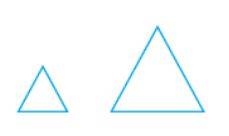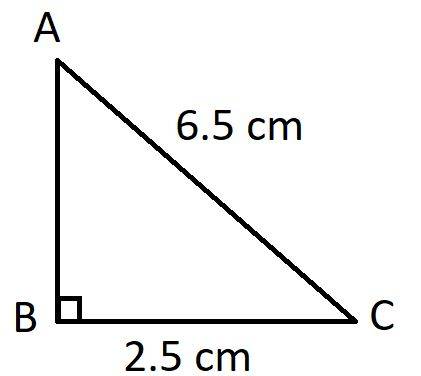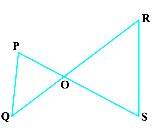
Rachit Kumar SaxenaManager-Editorial
What is a Triangle?
Triangles are one of the most important topics of mathematics. It studies the similarity of shapes, various theorems detailing a similar relationship between the two triangles. These theorems apply to every type of triangle, starting from an isosceles to a right-angled triangle.
The following conditions for similar triangles, various similarity criteria theorems of triangles, and results derived from these criteria need to be understood and remember:
Similar Figures
Source: NCERT
Similar Triangles
Two triangles are said to be similar if:
- Their corresponding sides are in the same proportion (ratio),
- And their corresponding angles are equal.
Various Criteria for Similarity of Triangles
- AAA (Angle-Angle-Angle) Similarity Criteria
Two triangles are similar; if the two triangles' corresponding angles are equal, then their corresponding sides are in the same proportion.
- AA (Angle-Angle) Similarity Criteria
If the two angles of one triangle are equal to two angles of the other triangle, both triangles are similar.
- SSS (Side-Side-Side) Similarity Criteria
Two triangles are similar; if the corresponding sides of two triangles are in the same proportion, their corresponding angles are in the same ratio.
- SAS (Side-Angle-Side) Similarity Criteria
Two triangles are similar if one angle of a triangle is equal to the one angle of another triangle, and sides including these angles are in the same proportion.
Results derived from Similarity Criteria Theorems
- The ratio of Corresponding sides = Ratio of Corresponding Medians
- The ratio of Corresponding sides = Ratio of Corresponding Segments of an angle bisector.
- The ratio of Corresponding sides = Ratio of Corresponding Perimeters
- The ratio of Corresponding sides = Ratio of Corresponding Altitudes
Definition of Triangles
A triangle is a geometrical figure comprising three vertices and three sides. The sum of all angles in a triangle is 180 degrees, and this is the fundamental property of this three-sided figure.
Properties of a Triangle
The important properties of a triangle, as stated below:
- Every triangle has three vertices and three sides.
- The sum of all the interior angles of a triangle is equal to 180 degrees. If we consider the exterior angles, this measurement goes up to 360 degrees.
- In a triangle, the addition of the lengths of two sides is always greater than the third side. Also, the difference of any two sides of a triangle is always less than the third side.
- The smallest side of a triangle is always opposite to the smallest angle, whereas the largest side of a triangle is always opposite to the largest angle.
Types of Triangles
Based on its sides’ length, a triangle has three types, viz. scalene, equilateral and isosceles triangle. Based on the measurement of its angles, a triangle has three types, viz. acute-angled triangle, obtuse-angled triangle, and right-angled triangle.
Based on the sides
- Scalene - A triangle in which all the sides have different lengths.
- Isosceles - A triangle in which any two sides have equal length.
- Equilateral - A triangle in which all the sides have the same length.
Based on the angles
- Obtuse-angled triangle - If one angle of a triangle measures more than 90 degrees, it is an obtuse-angled triangle.
- Acute-angled triangle - If one angle of a triangle measures less than 90 degrees, it is an acute-angled triangle.
- Right-angled triangle - A triangle with one angle that measures up to 90 degrees, is called a right-angled triangle.
Area & Perimeter of a Triangle
The area of a triangle can be measured by multiplying the product of its base and height by half.
Area of a triangle = ½ x base x height.
The perimeter of a triangle is equal to the sum of its all sides.
Heron’s Formula
If the length of all the sides of a triangle is known, then its area can be measured by using Heron’s formula which says that area of a triangle ABC = √[s(s-a)(s-b)(s-c)], where s = perimeter of the triangle.
Weightage of Triangles
This is an important chapter in class 10. 8-10 marks are allotted to this chapter. A student may expect 1 mark, 2 marks and 3 marks questions from this chapter.
Illustrative Examples on Triangles
1. A 6.5 m long ladder is put against a wall so that its foot should rest at a distance of 2.5 m from the wall. Find the height of the wall where the top of the ladder touches it.
Solution:
Let AC be the ladder and AB be the wall.
Given: AC = 6.5m =13/2 m
BC=2.5 m= 5/2m
In Right angle triangle, ABC,
AB2 + BC2 = AC2 (By using Pythagoras Theorem)
AB2+ (5/2)2 = (13/2)2
AB2= 169/4 – 25/4
AB2 = 144/4 = 36
∴Required height, AB = 6 m
2. If a line segment intersects sides AB and AC of an ∆ABC at D and E respectively and is parallel to BC, prove that AD/AB=AE/AC.
Solution:
Given: In ∆ABC, DE || BC
To prove: ∆DAB=∆EAC
Proof:
In ∆ADE and ∆ABC
∠1 = ∠1 … Common
∠2 = ∠3 … [Corresponding angles]
∆ADE ~ ∆ABC [AA similarity criteria]
∴ AD/AB =AE/AC [In similar ∆’s corresponding sides are proportional to each other.]
3. If PQ || RS, prove that ∆POQ ~ ∆SOR.
Solution:
PQ || RS (Given)
Source:NCERT
So, ∠ P = ∠ S (Alternate angles)
∠Q = ∠ R
∠∆POQ = ∠∆SOR (Vertically opposite angles)
Therefore, ∆POQ ~ ∆SOR (AAA similarity criterion)
4. The height of a triangle is 30cm and its base measures 45 cm. Find its area.
Solution:
Area of a triangle = ½ x base x height = ½ x 30 x 45 = 675 square cm.
5. The perimeter of an equilateral triangle is 120 cm. Find its area.
Solution:
In an equilateral triangle, each side has the same length. Therefore, if we consider each side to be of length x, then the perimeter can be given by:
3x = 120.
Therefore, x = 40.
From Heron’s formula the area of the triangle will be:
= √[s(s-a)(s-b)(s-c)]
= √[ 120 (120 - 40) (120 - 40) (120 - 40)]
= √[120 x 80 x 80 x 80]
= 5608679 square cm.
6. In triangle ABC, AB = 5cm and BC = 7cm. Find the length of its other side if its perimeter is equal to 15cm.
Solution:
Perimeter = sum of all sides = AB + BC + AC
15 - (5 + 7) = AC
Therefore, AC = 3 cm.
FAQs on Triangle
Q: What is Thales Theorem?
Q: What is the converse of the Triangle Proportionality Theorem?
Q: Explain Angle Bisector Theorem?
Q: Explain Pythagoras Theorem?
Q: Explain Converse of Pythagoras Theorem?
News & Updates
Maths Triangle Exam
Student Forum
Popular Courses After 12th
Exams: BHU UET | KUK Entrance Exam | JMI Entrance Exam
Bachelor of Design in Animation (BDes)
Exams: UCEED | NIFT Entrance Exam | NID Entrance Exam
BA LLB (Bachelor of Arts + Bachelor of Laws)
Exams: CLAT | AILET | LSAT India
Bachelor of Journalism & Mass Communication (BJMC)
Exams: LUACMAT | SRMHCAT | GD Goenka Test



